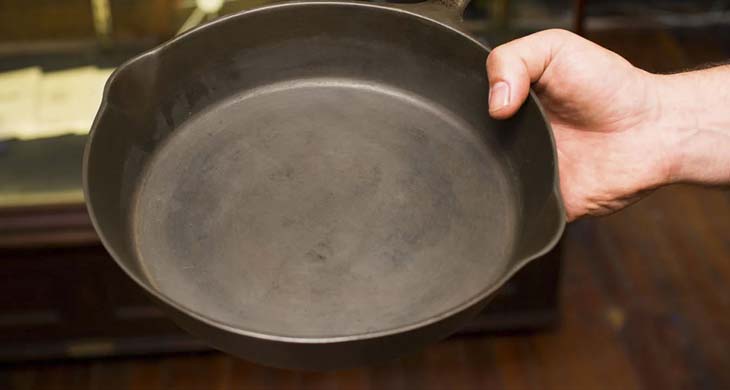Cast Iron Pans & Your Health: 7 Important Facts You Should Know

Cast iron pans have graced kitchens for thousands of years. It’s a trusty and durable cooking utensil that is hard to damage. With proper cleaning and care, cast iron cookware can last for a long time. Even old and rusted pans could be restored to a good condition.
Plus, when it’s properly seasoned, cast iron can develop its own nonstick surface — and it can be “re-seasoned” to reapply when the nonstick starts to wear off. However, just because something has been used for thousands of years doesn’t mean it’s ideal for everyone.
7 Important Facts About Cast Iron Pans
They can maintain heat very well.
Once you heat up a cast iron pan, it retains its warmth. This is ideal for keeping food hot but has a catch. These pans can take a while to heat up and cool down fully. They are unsurprisingly very heavy cookware, so lift with caution.
They are versatile tools that can use different heat sources.
People who swear by their cast iron pans tend to enjoy their versatility. Cast iron can go onto any kind of stovetop, from gas to induction to electric. The pans could even be placed directly into the oven, which makes them great for stove-to-oven recipes like frittatas. For campers, these pans can cook over a direct flame, such as a bonfire.
They are easy to clean.
Although cast iron pans come with a bit of a learning curve, they are easy to clean once you know how. In fact, they can be easier to clean than aluminum or glass cookware because of their natural nonstick surface.
They can come in different sizes and shapes depending on your needs.
Although cast iron skillets are the most famous of their kind, cast iron also comes in the form of pots, cake pans, pizza pans, griddles, and many more. And all of these come with the traits of retaining heat, nonstick surfaces, etc., so it’s important to keep this in mind and adjust recipes accordingly if you are used to using other types of cookware.
They are affordable.
Cast iron cookware tends to be reasonably priced. But even more so, it’s a good one-time investment because these pots and pans are durable and can last for a long time. You may also find cast iron cookware in second-hand shops, thrift stores, and other places with reduced prices. Remember, old and rusted cast iron cookware can usually be effectively restored.
They can go from oven to table.
Many cast iron pans and the like are attractive enough to be served in. That means no transferring food to a serving tray — and doing extra dishes. In fact, many restaurants serve dishes in mini cast-iron pans, such as mini pizzas, shakshouka, and even mac and cheese. Remember, cast iron retains heat well, which allows food to stay warm throughout the meal.
They may increase iron levels in certain foods.
Research has shown that cooking with cast iron may increase the iron content in certain foods. Now, people with iron deficiency anemia shouldn’t depend on cast iron as a treatment; rather, it may be useful alongside supplements and dietary changes recommended by their healthcare practitioner. But even people without a deficiency may struggle to consume enough iron in their diets.
Not all foods made in cast iron have increased iron content. But those that do include tomato sauce, rice, fried eggs, and applesauce. This is because foods with vitamin C and acidity can increase the absorption of iron into the dish.
However, consuming too much iron is possible, which can lead to negative effects such as increasing the production of free radicals because the body cannot remove iron as it would the excess of other nutrients. In fact, too much iron has been linked to many health conditions, including heart disease, Alzheimer’s, and colorectal cancer. People with deficiency, vegans, vegetarians, and women during menstruation don’t usually have to worry about consuming too much iron.
But for others, particularly those with hereditary hemochromatosis and those who consume a lot of red meat and fortified foods, iron can add up very quickly, especially with the help of cast iron cookware. Ensuring the pans are well-seasoned can limit the amount of iron leaching into the food. Remember that older pans are less likely to leach iron than newer and less seasoned pans.
Cooking Tips
Cast iron cookware can cook in many different ways, including searing, baking, frying, roasting, sautéing, and browning. People use it to cook meat, eggs, vegetables, pancakes, and baked foods. However, despite their versatility, they are not ideal for everything. For instance, you should use different cookware to boil water or simmer, especially knowing that food can absorb more iron the longer it’s cooked.
And remember, acidic foods with tomatoes, wine, and vinegar are more likely to absorb iron, and that iron flavor that may spoil the food. These ingredients can also damage the nonstick coating and require the pan to get re-seasoned more frequently. Cast iron cookware has its pros and cons, but if it works for you, it could be a helpful life-long investment.




